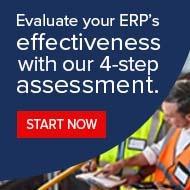 Cloud technology is now so prominently established that it seems as if it’s been around forever. But it wasn’t too long ago that its adoption was characterized by a cautious wait-and-see attitude, rife with perceived risks and unknowns.
Cloud technology is now so prominently established that it seems as if it’s been around forever. But it wasn’t too long ago that its adoption was characterized by a cautious wait-and-see attitude, rife with perceived risks and unknowns.
Today, along with the development of so much new functionality in the cloud, there’s been a dramatic shift in thinking for most organizations — and that’s essentially changed the way manufacturing companies can approach the concept of “best of breed.”
The rise of “best of breed”
In the ‘80s and ‘90s, it was common for IT managers to hand-pick the best possible applications available to their business, then integrate them into their company’s existing ERP package for a “best of breed” solution. While this approach indeed helped companies leverage the best of what they needed, there were notable downsides. The approach created a hodge-podge system and a complex internal architecture that was difficult for IT departments to manage. Such an approach also required a variety of specialized in-house skillsets.
A move toward the one-stop shop
Over time, SAP and other software companies entered the ERP world with the idea of a “one-stop-shop” solution that offered a full suite of applications for any given business. The idea was for companies to have all their desired functionality, all on one platform — thereby simplifying the environment and the skillsets required to manage it. Organizations moved away from “best of breed” concept toward a single-solution, rip-and-replace mentality. However, with this approach, companies were not necessarily utilizing the business solutions that best matched their needs. They traded superior functionality for modules that met their basic needs in integrated packages operating in less complex environments.
Technology evolution brings us back to “best of breed”
Today, cloud-based advancements have eclipsed many of the challenges formerly associated with the best of breed approach — in what we now call Hybrid ERP.
The once-popular rip-and-replace mentality proved too costly, too risky, and in many cases, too misaligned with the functional and monetary benefits that businesses truly required. In fact, cloud-based solutions are causing organizations to embrace a different investment strategy altogether — that is, SaaS monthly service fees in place of the large capital investment and infrastructure upgrades that were once required.
Another dramatic change we’ve seen in the last few years is the development of more and more cloud-based applications. These applications, which are readily available and accessible in the cloud, can support a multitude of businesses processes and require minimal effort to implement. (Read more about how a Hybrid ERP approach offers far lower implementation than a straightforward ERP solution, and utilizes cloud software to augment your on-premises system.) With vendors managing their applications in standard cloud services and new integration tools and techniques, the breadth of skillsets required of in-house resources is significantly reduced.
Finally, perhaps the most prominent change is the mental leap in adopting “all things cloud.” Companies are embracing a long-term strategy of both augmenting their legacy ERP with point cloud solutions as well as slowly moving parts of ERP functionality to the cloud.
Additionally, concerns over security and ownership that once posed a common barrier for many companies have almost been eliminated.
Today, most organizations readily recognize cloud technologies (and the vendors who provide them) as a safe and secure option. This may be largely due to the fact that cloud computing has become so pervasive in our daily lives (think Salesforce and NetSuite) that there’s a general willingness for companies to embrace the cloud in the IT world as well. And when talking about “best of breed” approach, companies can realize the same benefits they did decades ago, but without all the complexities that once held them back. The cloud finally brings the agility we’ve been talking about for decades!
To learn more about Hybrid ERP and cost effective, strategic ERP options that increase functionality to meet all your business needs, without having to replace your current system, check out our short webinar, Hybrid ERP: Finding the Right Set of Solutions for Your Enterprise.
Why partner with PSGi?
A Hybrid ERP approach means you don’t have to throw away the comprehensive functionality that exists with your ERP – instead, you can surround your ERP with your desired best-of-breed functionality either in-house or in the cloud. (For instance, our customers have employed cloud-based functionality including BI/analytics, CRM, Warehouse Management, Trade Management, and more). However, it’s critical you have the right partnership in place to help manage and maintain your business applications to ensure they are helping you achieve your business goals.

